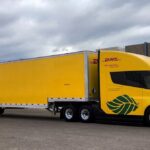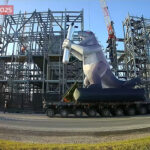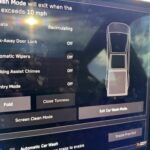In an unexpected post on the social media platform X, Elon Musk’s SpaceX officially unveiled the new grid fins of the Starship Super Heavy rocket booster.
According to SpaceX, these new redesigned grid fins are going to be integrated into the next generation of its Super Heavy boosters for future Starship launches.
Along with the photos of the next-gen Super Heavy booster’s grid fin, SpaceX also released some important technical information on the new Starship hardware.
The basic function of these huge grid fins is to control the angle of attack (the attitude) of the Super Heavy rocket on descent after delivering the Starship upper stage in space.
Although SpaceX has caught Super Heavy boosters in three different flight tests (Flight 5, Flight 7, and Flight 8), Musk’s space launch company still persists on constant improvement and innovation.

Redesign & Reconfiguration
SpaceX has redesigned the next-gen grid fins by mainly changing the shape of the hardware. The previous generation Super Heavy grid fins are slimmer and rectangular with the outer front side having sharp corners.
The next-gen grid fins have a bulkier more squarish shape and the front corners are rounded. This makes the design look less edgy and longitudinal (see comparison pic below).
There will only be three grid fins installed in the upcoming Starship Super Heavy boosters generation. The current generation has four grid fins (until Flight 10).

Musk’s SpaceX engineering team reduced Super Heavy grid fins but expects it to perform better because the next-gen fins are 50% larger in size and hold more strength because of optimized stainless steel construction.
SpaceX wrote on X:
The first grid fin for the next-generation Super Heavy booster. The redesigned grid fins are 50% larger and higher strength, moving from four fins to three for vehicle control while enabling the booster to descend at higher angles of attack.
Advantages: Lift & Catch
Unlike the previous grid fins, the next-generation Super Heavy fins will also be used for lifting and catching the booster. This is a significant change from the current generation.
The current generation of Super Heavy Starship rocket boosters are equipped with two pins that are used to lift and catch the launch vehicle.
SpaceX has increased the strength and size of the grid fins not just for achieving controlled attitude at steeper descent angles, but these fins will also enable better lifting and smoother catches of the booster.
SpaceX has also lowered the position of the new grid fins on the booster. This lower placement saves the grid fins from ultra-high temperatures during the hot-staging phase.
Elon Musk’s commercial spaceflight and astronautics company outlined the features on X as:
They’ll also be used for vehicle lift and catch, made possible by a new catch point addition and a lower positioning on the booster to align with the tower catch arms. Moving lower reduces the heat they receive from Starship’s engines at hot-staging and places the fin shaft, actuator, and fixed structure inside the booster’s main fuel tank.
Dimensions & Weight
According to SpaceX, the newly designed grid fins for Super Heavy are 50% larger than the current generation ones. This translates to the following estimated dimensions:
The legacy grid fins are around ~5 meters in height and ~2.5 meters in width, and weigh around ~3 metric tons each.
A 50% increase makes the new grid fins ~7.5 meters high and ~3.75 meters wide. Interestingly, the weight of the new fins is expected to remain the same as the previous generation due to optimized stainless steel.
The spike-shaped grid helps reduce aerodynamic drag at supersonic speeds during descent from the Earth’s atmosphere. Reduced drag also results in thermal management (reducing heat) and increased fuel efficiency.

Stay tuned for future updates on Starship and SpaceX, Follow us on:
Google News | X (Twitter) | Flipboard | WhatsApp Channel | RSS (Feedly).
Related Tesla, SpaceX, Elon Musk News
- Tesla’s Elon Musk and AI Head Ashok Elluswamy test Unsupervised FSD (video)
- DHL shares Tesla Semi’s efficiency and range after long-haul full load testing
- SpaceX pushes to stay on track for Flight 12 Starship launch schedule, watch the Christmas Parade at Starbase, Texas
- Waymo gets stuck in the San Francisco power outage while Tesla FSD runs smoothly, watch FSD perform in blizzards
- Cybertruk gets Car Wash Mode with the 2025.44.25.5 Tesla software update
- Tesla (TSLA) wins legal battle over Musk’s 2018 Pay Package worth $56 billion in Delaware Supreme Court







